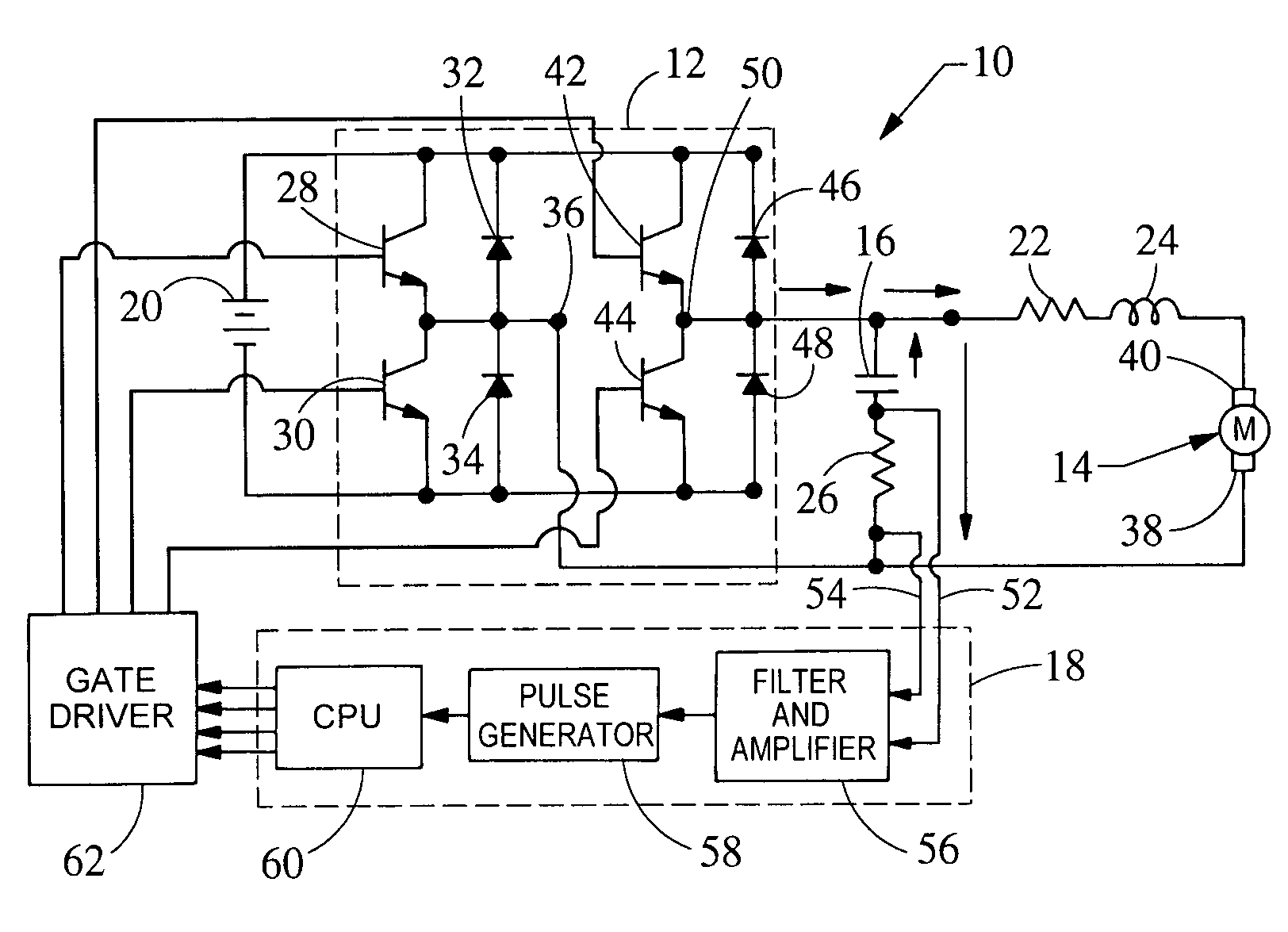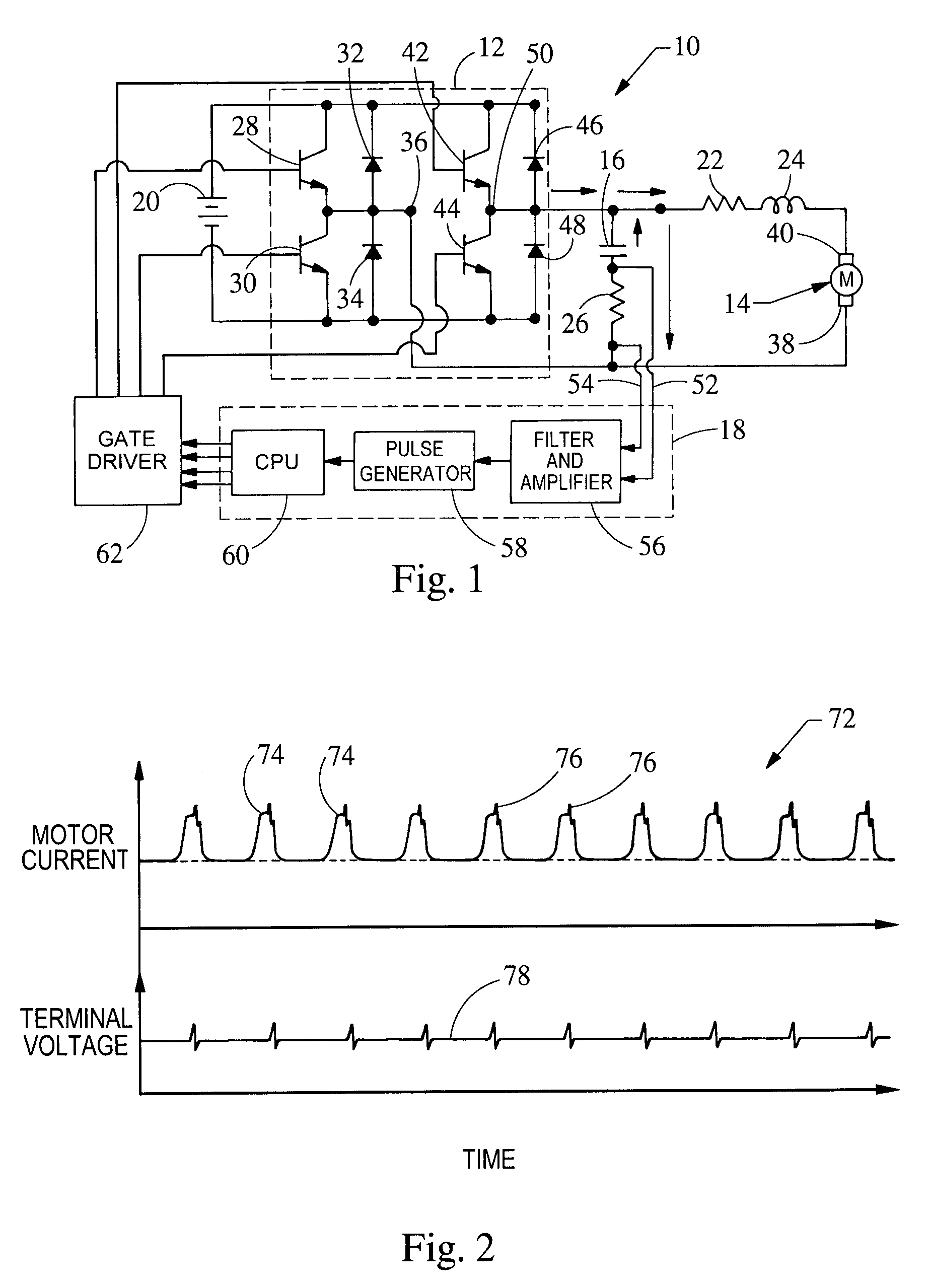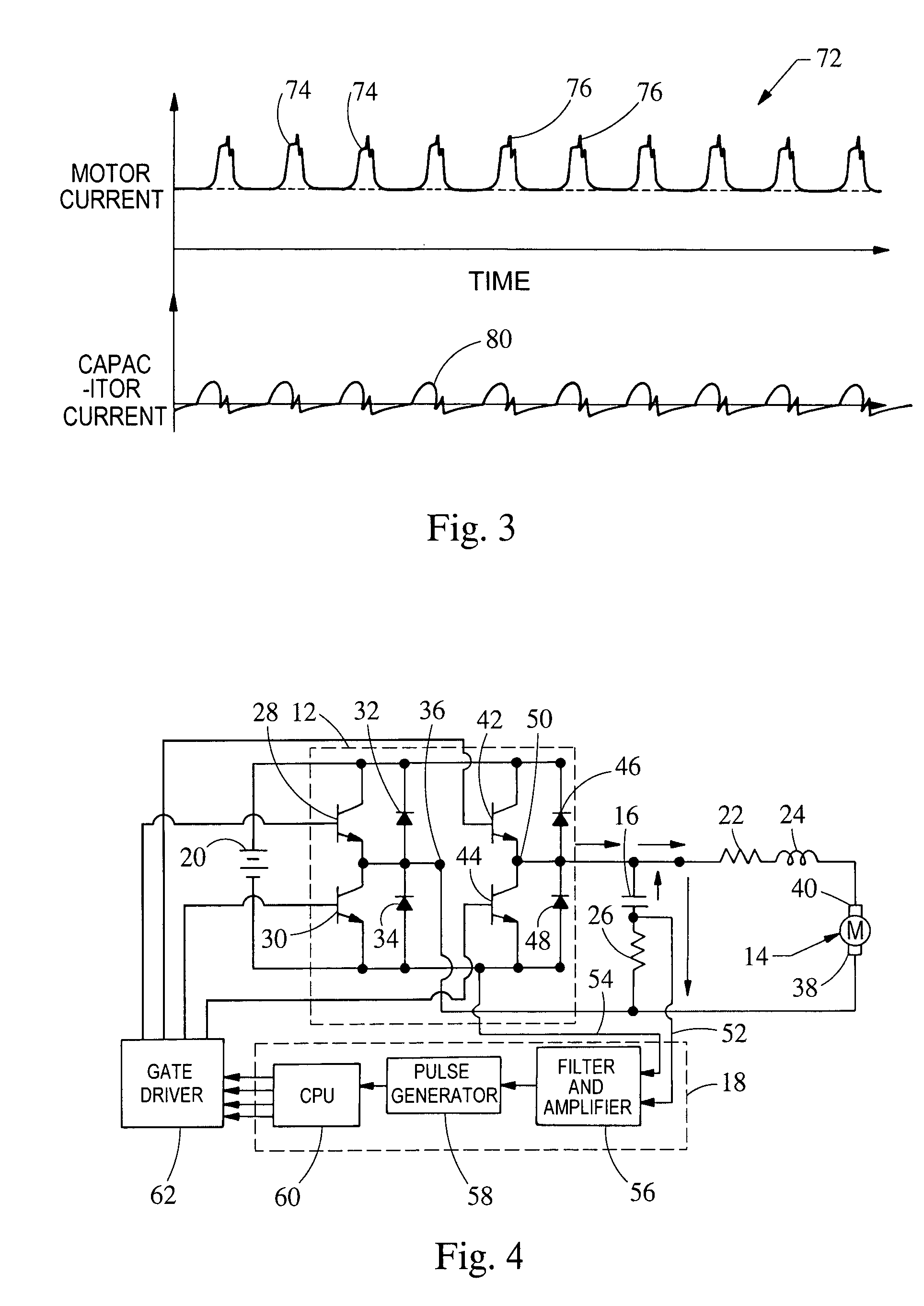Apparatus for DC motor position detection with capacitive ripple current extraction
- Summary
- Abstract
- Description
- Claims
- Application Information
AI Technical Summary
Benefits of technology
Problems solved by technology
Method used
Image
Examples
Embodiment Construction
[0024]Referring now to FIG. 1, a system embodying the principles of the present invention is illustrated therein and designated at 10. The system 10 includes a power electronics switching circuit 12, a DC motor 14, a capacitor 16, and a ripple current detection apparatus 18. A power source 20, shown as an automotive battery, provides power to the switching circuit 12. The switching circuit 12 is shown as an H-bridge switching circuit, the details of which will be discussed further below. The switching circuit provides voltage to drive the motor 14. Resistor 22 and inductor 24 represent the effective resistance and inductance of the DC motor 14, respectively. A combination of capacitor 16 and impedance 26 is in electrical parallel connection with the motor 14 and the switching circuit 12. Further, an impedance 26 is connected in electrical series with the capacitor 16 across the motor 14. A first node 52 of the current ripple detection apparatus 18 is connected between the capacitor ...
PUM
 Login to View More
Login to View More Abstract
Description
Claims
Application Information
 Login to View More
Login to View More - R&D
- Intellectual Property
- Life Sciences
- Materials
- Tech Scout
- Unparalleled Data Quality
- Higher Quality Content
- 60% Fewer Hallucinations
Browse by: Latest US Patents, China's latest patents, Technical Efficacy Thesaurus, Application Domain, Technology Topic, Popular Technical Reports.
© 2025 PatSnap. All rights reserved.Legal|Privacy policy|Modern Slavery Act Transparency Statement|Sitemap|About US| Contact US: help@patsnap.com



